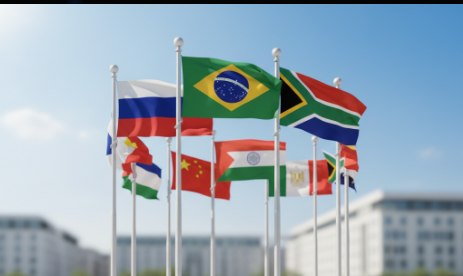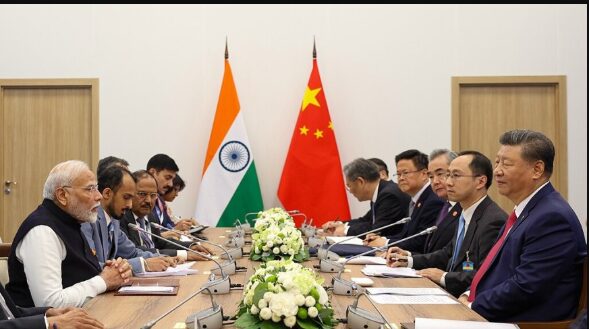It was not a gathering of the BRICS, but a shaking of the planet in the flashy frenzy of Copacabana Palace in Rio de Janeiro on July 6, 2025, the day Brazil ran the BRICS. As confetti still fell from the fireworks at the summit, South-South leaders of 10 full members and an ever-expanding cadre of partners drank to a new era of South-South cooperation whose declaration was a velvet-gloved gauntlet tossed at Western financial bastions.
The addition of fresh ink on full membership documents, sealing its entry into the club as the tenth powerhouse on January 6, brought BRICS to 44 percent of global GDP, to 56 percent of global population, and to within 30 percent of global oil output. However, more than the optics, this is not pompous but a power play.
With the rumors of some payment system powered by blockchain spreading through the corridors of Moscow and the boardrooms of Beijing, BRICS looks forward to replacing the dollar and remaking the trade, as well as breaking the IMF-World Bank duo. X bursts with the stakes: BRICS 2025: Reshaping World Politics, one thread is celebrating, the other panicking. Trump tariffs vs. BRICS rise: a global shift is incoming. In a multipolar maze, BRICS is not knocking on the door of the West; it is constructing its own parallel palace.

From five founding members to a coalition of ten, BRICS grows into a powerhouse representing nearly half of the global population.
The New Guard: From Five to Ten—and Counting
BRICS, an economic bloc comprising Brazil, Russia, India, China, and South Africa, was established in 2009 with the addition of Egypt, Ethiopia, Iran, the UAE, and Saudi Arabia, which crossed the threshold on January 1, adding energy titans and African representation. The final nod by Saudi Arabia, which took a long time to be confirmed, gave Saudi Arabia a boost of $1.1 trillion to its GDP and enhanced Riyadh’s oil influence. Jump to 2025: With the January 6 accession of Indonesia (the first Southeast Asian anchor to the bloc), representation has gone to 46% of the world population and 36% of GDP, according to Geopolitical Economy reports.
But the real game-changer? The 20 entities in the Big Tent are those nine partner countries to be expanded to 20—Belarus, Bolivia, Cuba, Kazakhstan, Malaysia, Nigeria, Thailand, Uganda, and Uzbekistan, as of January 1, 2025. Things were made even more palatable with Vietnam becoming its July 2025 partner, with full membership coming in 2026. Africa had its own footing with the 2026 induction floated by Nigeria and Angola, according to Infobrics intel, because the continent, which is the growth engine of the BRICS, must be allocated more seats at the table.
This is not a random development; it is planned. Egypt mediates Africa-Mideast trade (200 billion legislations), Iran and Saudi oil giants (45% of BRICS crude) resist a Western inclination, and Indonesian nickel hegemony fills EV aspirations. Optimism buzzes: BRICS Emergency Summit 2025: Key Decisions. A viral thread breaks down the details of how these additions will see intra-bloc trade reach 6 trillion a year. But stresses are present: The feudalism of Saudi fossil fuel collides with Brazilian green, and unity is challenged in the face of Trumpian tariff storms.

With Saudi Arabia and Iran joining BRICS, the bloc now controls nearly a third of global oil output and strengthens its economic leverage.
Currency Ambitions: From Dollar Dreams to De-Dollarization Reality
At Rio, the elephant in the room was the payment system of BRICS, an armored elephant powered by blockchain, a local currency lifeboat to reduce USD reliance, passed to beta. Intra-BRICS trade of nearly 3 trillion is currently conducted in rupees, yuan, and rubles, compared to 20 percent in 2023, with symbolic BRICS notes having been tried to symbolically (but not immediately) weigh something. A local-currency loan of up to 100 billion dollars is promised by the New Development Bank (NDB), an IMF competitor to BRICS, to go green without making any dollar-related risks.
The rush of de-dollarization shot up following the July 2025 tariff onslaught of 145% on Chinese EVs alone, in which Beijing declared its intent to hasten other mechanisms. GIS Reports report on the guts of the system: An international network combining mBridge (China-led CBDC trials) and Russia’s SPFS that will allow instant settlements without SWIFT. Critics sneer that a full coin of BRICS is still sci-fi, according to the August Stimson Center postmortem on Rio, where de-dollarization deserved not even a whisper in copy. But actions speak: Intra-bloc oil transactions in yuan reach 30% in Q3 2025, undermining petrodollar dominance.
The passion is seized by X threads: “BRICS Currency vs. US Dollar: Can it change World Trade? a single viral post inquires, counting 10K views, about how this would save 5-10 percent of USD reserves by 2030. Obstacles loom in the Indies and rupee reserve and Russia and the sanction saga, though the dream? A multipolar fiscal chart, in which the South writes its own fiscal destiny.

BRICS explores blockchain-based payment systems to reduce dependency on the U.S. dollar and reshape international trade.
The Western Wake-Up: A Challenge to Hegemony’s Heart
The spread of BRICS is not economic Esperanto but an existential threat. Carnegie threatens the bloc that they claim to take the U.S. dollar off the pedestal and that the West strangleholds the World Bank (with its biased votes) and the IMF quotas (15% share of BRICS is 44% of the GDP). The panic is betrayed by the July rant of Trump in his cabinet, when he talks about how BRICS was established to degrade our dollar, because the Hudson blueprint of the countermeasures is Tariff walls, alliance arm-twisting.
The Rio Declaration condemned the act of coercive measures unilaterally (read: sanctions), promising BRICS-led reforms of a multipolar order. The peak of the slapstick on G7 primacy by 2025 is dubbed a polycrisis pivot by Phenomenal World, as China surges to 35 percent of bloc GDP and U.S. anarchy escalates the attack. Western preemption by America in the quarterly EU: the de-risking agreements with India, but BRICS: $50 billion NDB green bonds, attracting defection by the Global South.
Politically incorrect advantage: this is a challenge that brings out Western hypocrisies, its lecturing morality of rules, and vetoing UNSC equity, proven by blocked African seats and debt traps in a multimillion-dollar debt trap on Southern dues. X hits the nail on the head: BRICS Expansion: Shifting the Center of Global Power, a post by Mission Grey, cautions multinationals against the threats of changing trade rules. By 2030, BRICS may surpass the G7 GDP, according to StrideU, giving rise to a bifurcated world in which the South dictates terms.
| Category |
Key Players (2025) |
Strategic Edge |
| Full Members (10) |
Brazil, Russia, India, China, South Africa, Egypt, Ethiopia, Iran, UAE, Saudi Arabia, Indonesia |
44% global GDP; 30% oil output |
| Partners (9+) |
Belarus, Bolivia, Cuba, Kazakhstan, Malaysia, Nigeria, Thailand, Uganda, Uzbekistan, Vietnam |
Bridge to full status; $6T intra-trade boost |
| Currency Tools |
NDB local loans; Blockchain payments |
50% non-USD trade; De-risk from sanctions |

African nations push for greater representation within BRICS, signaling the continent’s growing economic and political clout (Source: afripoli)
Dawn of a Divided Dollar? BRICS’ Bold Horizon
By October 2025, after-Rio washbacks hit the West coasts: the partner of the former bid Nigerian Africa out of IMF orbit, and the nickel vaults the BRICS into the EV dominance. Issues are still there—domestic divisions and trade tantrums by Trump—but the direction? Where the Symphony of the South swallows up solo performances. As the freelance scribes of Medium explained, BRICS is not only growing, but it is also overshadowing.
Read More: Migration & Refugee Crises: Europe and the Americas Grapple with New Humanitarian Pressures